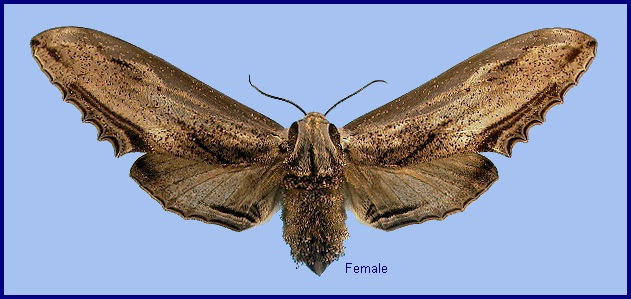
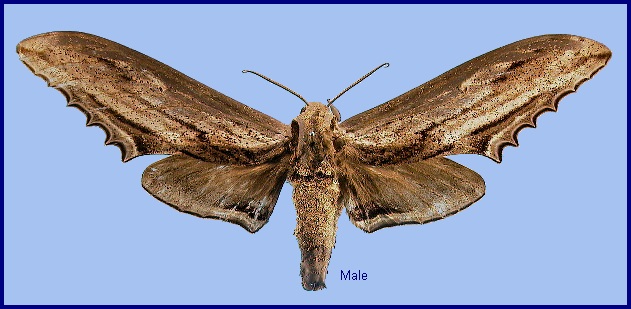
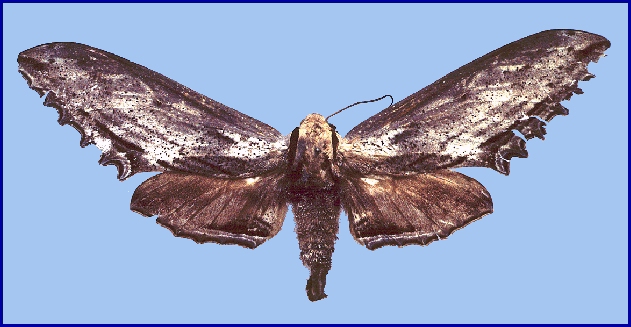
Langia zenzeroides Moore, 1872, Proc. zool. Soc. Lond. 1872: 567. Type locality: Northwest Himalayas [India], [Himachal Pradesh,] 50 miles from Simla, Kotghur [Kotgarh].
Synonym. Langia khasiana Moore, 1872.
Synonym. Langia zenzeroides nina Mell, 1922.
Synonym. Langia zenzeroides szechuana Chu & Wang, 1980.
Synonym. Langia zenzeroides kunmingensis Zhao, 1984.
Wingspan: 100--156mm. After emergence, the wings of the moth take a long time to dry. In the resting position these are held steeply penthouse-wise and the abdomen is bent upwards and outwards. It is very sluggish during the day, but if alarmed raises its body and raises and partly opens its wings, at the same time making a hissing or squeaking note similar to that made by Acherontia styx.
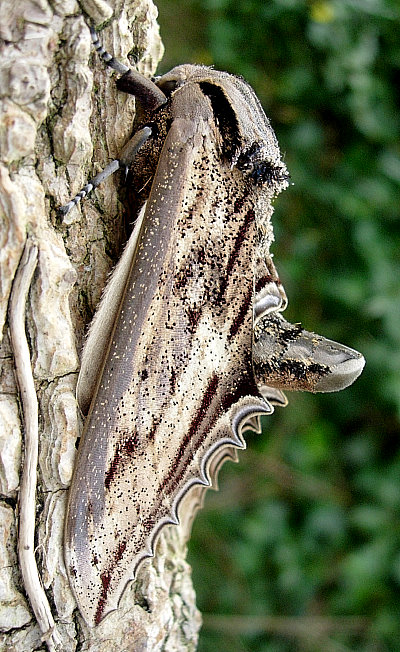
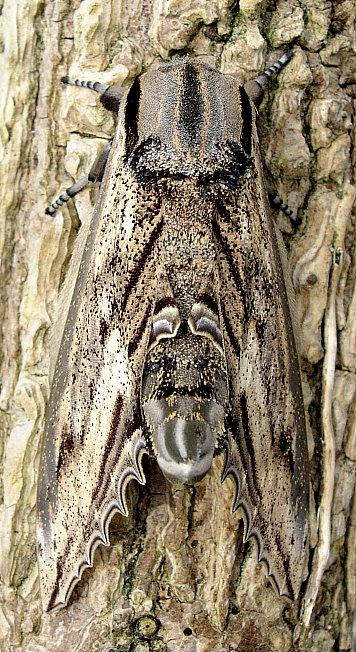
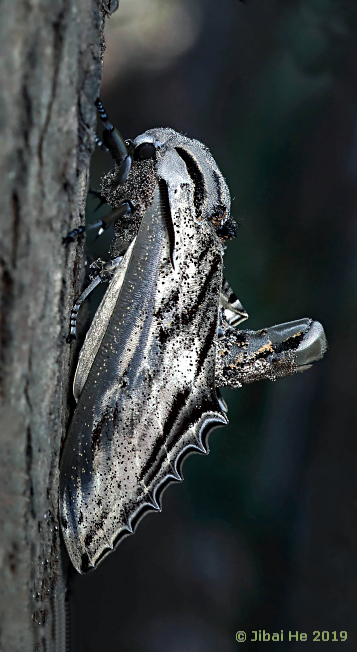
The non-feeding moth does not appear to be attracted by light and does not frequent flowers (Bell & Scott, 1937).
China: 13.iii (Malipo, Yunnan); 28.iii (Zhaotong, Yunnan); 13-17.iv (Dayao Shan, Guangxi; Baihua Shan, Beijing); 6.v (Yanqing, Beijing); 19.v (Baihua Shan, Beijing); 1-15.vi (Guizhou).
In northern China there is only one generation per year, with adults flying mainly in April-May (Yang, 1978).
Park et al. (1999) give late April until mid May as the flight period in Korea.
For comparison, in Thailand the main flight period is January and February (Inoue, Kennett & Kitching, [1996] 1997).
OVUM: Peppermint green when first laid, then becoming bright russet (if fertile), before turning whitish (transparent) two days before hatching. Slightly oval (2.50 x 2.00mm), shiny and smooth. Laid singly on the underside of a leaf (Bell & Scott, 1937).
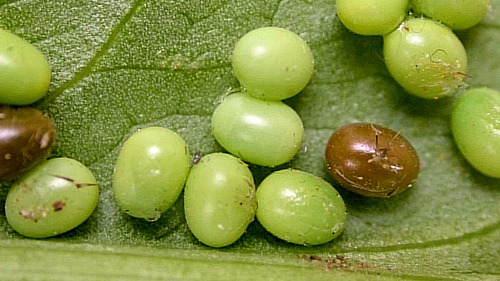
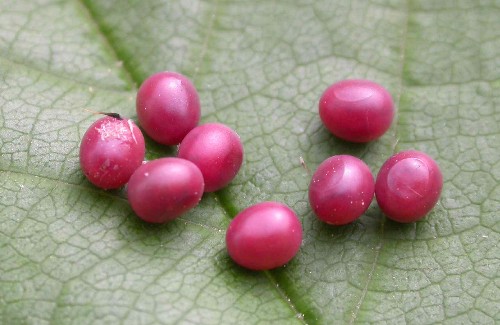
LARVA: Full-fed 125mm. According to Bell & Scott (1937), in the first instar the head is round, the body cylindrical, and the horn almost straight and very long. Surface of head and body, including horn, covered with white hairs, which are far longer on the body than on the head. Colour of head pale green, body yellowish-green with a slightly paler dorso-lateral line, horn reddish-purple. In the second instar the head becomes triangular, with a short process rising from the apex of each lobe. The horn is long and slightly up-curved. Surface of body covered with pale tubercles; head and body green, processes on the head black. The now yellow dorso-lateral stripe extends from the head to the base of the reddish horn. In the third instar the head is markedly triangular, with long apical processes and yellow cheek stripes. Head and body apple-green, covered with white tubercles. The dorso-lateral stripe, which is now formed of large yellow tubercles, extends up onto the back of the head. In the fourth instar the shape and colour of head and body is as in the third instar, but horn thick, dark green with yellow tubercles, ending in a blunt point directed downwards. Spiracles blue.
In the fifth and final instar the head is elongate-triangular, with a long process rising from the apex of each lobe, the two processes closely appressed to near tip, where they diverge. The head is three times as long as broad, smooth and moderately shiny. Thoracic segment 2 of less diameter than base of head, the segments then increasing in diameter to abdominal 3 -- the rest of the body is cylindrical. Body dull, with a transverse row of small pointed tubercles on each segmental ring. The dorso-lateral line of is composed of larger pointed tubercles from the front of segment 2 to base of horn. Latter very short, thick at base, with a blunt point, and covered with large rounded tubercles. Anal flap and claspers heavy; also covered with large rounded tubercles.
At this stage the head and body are apple-green in colour. Apical processes of head pale yellow, with a white stripe running down the cheek from each process to base of antenna, and also another running down the back of head to the nape where it meets the dorso-lateral line of tubercles on segment 2. Transverse rows of body tubercles white. Dorso-lateral line of tubercles yellow or reddish, on a yellow stripe. Horn green with whitish tubercles. Tubercles on anal flap and claspers pale green. Terminal segments of the true legs red. Spiracles oval, very large, pale blue edged with black, and with a black crescent-shaped mark above and below.
The larva lives on the underside of leaves and twigs, and is sluggish. When resting it holds on to a twig with the claspers and two or more pairs of prolegs and bends the front of the body backwards, the long point of the head continuing in the line of the adjacent segments, the true legs bunched together, and the pairs of unoccupied prolegs held with the feet pressed together. When molested it strikes from side to side with its head, at each stroke making a loud hissing noise. This appears to be produced by the sudden forcing of air through the spiracles, as, if these be wetted, bubbles of air are seen to be forced through the film of water. The full-fed larva is very large and heavy, and eats large quantities of leaves.
Before pupating it rests for some days without feeding, then becomes suffused with brown (darker dorsally), leaves the hostplant and burrows into the earth. In the underground cell the body becomes shorter and stouter, and besmeared plentifully with slime, which spreads to the surrounding earth. This slime appears to be secreted from the whole surface of the body, and not merely from the spinneret, and has a strong and very distinctive smell (Bell & Scott, 1937).
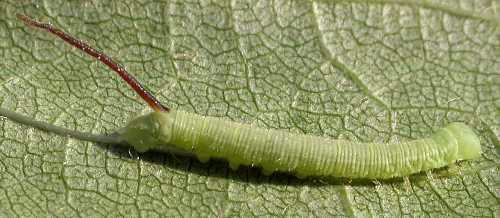
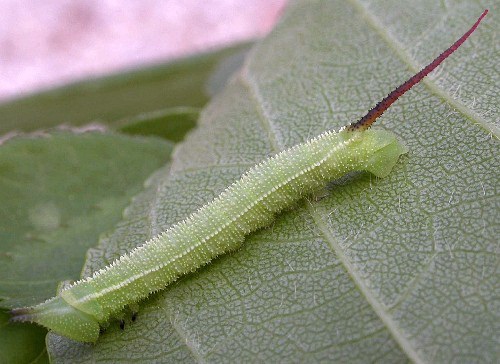
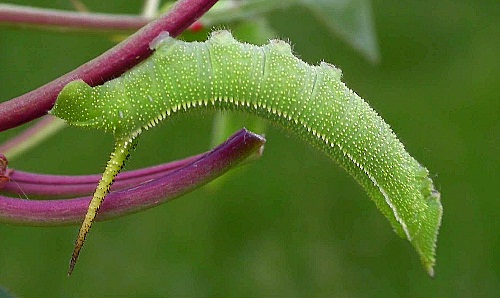
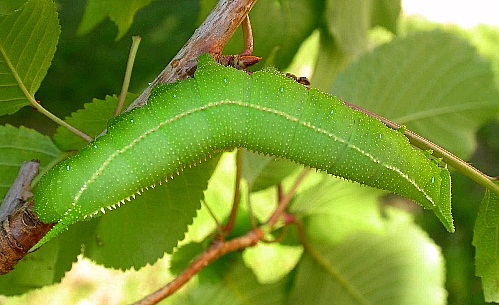
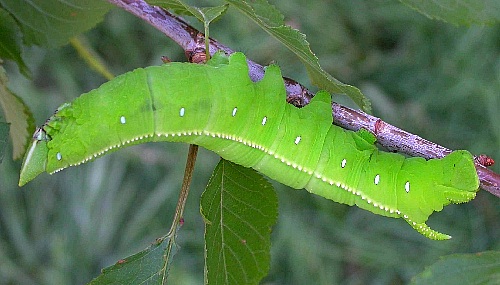
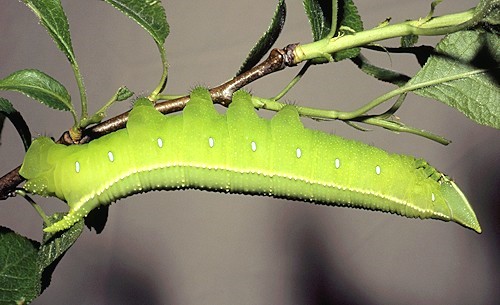
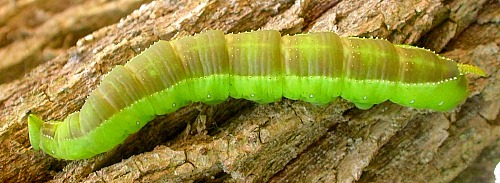
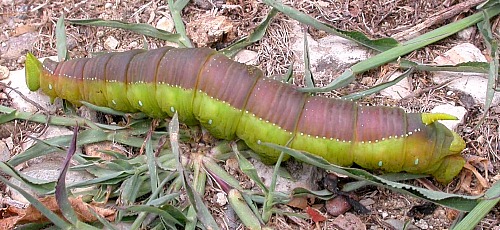
PUPA: 45--50mm. Iron-grey, almost black on dorsum, which has a reddish tinge when the pupa is freshly-formed. Very short and stout for the size of moth, and bluntly rounded at both ends. Tongue longer than fore leg, slightly longer than mid-leg, and reaching to the point where the wing-cases meet. Antenna very stout, longer than fore leg in both sexes; no coxal piece. Abdominal segments raised into high ridges, especially on the dorsum, the divisions between the segments deeply constricted. Surface dull and shagreened, especially on the ridges of the abdominal segments, which are also covered with conical tubercles. Spiracles oval, the lips of the central slit raised into narrow ridges. Cremaster absent or a very small pointed spike (Bell & Scott, 1937).
The pupa is very stiff and, except for a few days after pupation, does not make any perceptible movement when handled, giving the appearance of being dead. These form up a few weeks after pupation and overwinter in this state, with the outline of the adult clearly visible through the cuticle. Very prone to desiccation (J. Haxaire, pers. comm. 2004). The overwintering stage.
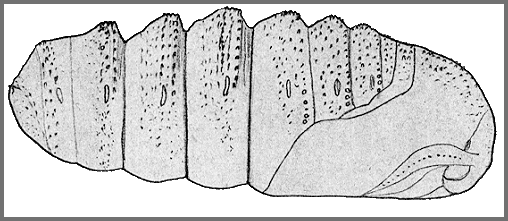
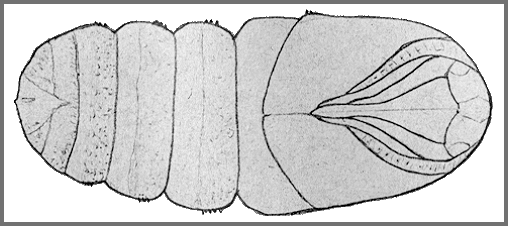
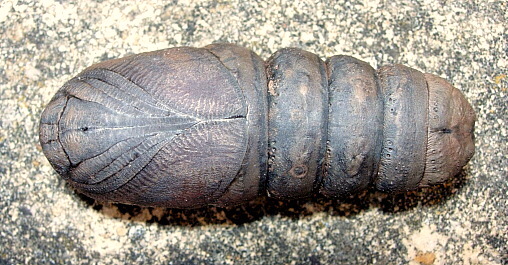
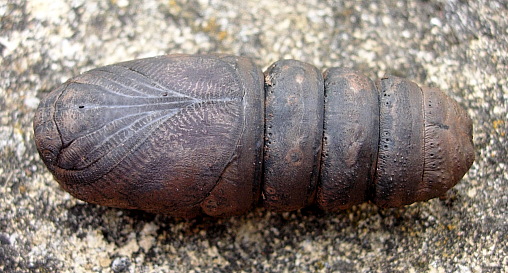
Larval hostplants. Recorded in Korea on Prunus persica (Park et al., 1999), but feeding on most woody Rosaceae, such as cherries, apples, pears and medlars.
Unknown.
China: Beijing (Songshan, nr. Yanqing; Baihua Shan); Zhejiang (Lüsi); Hubei; Sichuan (Guan Xian); Yunnan (Kunming; Zhaotong; Malipo County, Wenshan Zhuang and Miao Autonomous Prefecture, 1860m); Guizhou (Xinzhaidashan, Zhijin County, 1000-2000m); Fujian (Nanping); Guangxi (Dayao Shan, 1800m); Hainan (Duowen Ling, nr Lingao; Longhushan, Wenchang City).
South Korea: Seoul (Bukhan-san); Kyonggi Province (Gwangleung; Aengmubong; Suwon; Chukryong-san; Yongmun-san); Kangwon Province (Samak-san; Chuncheon); South Cholla Province (Mudeung-san); North Kyongsang Province (Hakga-san); South Kyongsang Province (Goseong; Namhae); Cheju Province (Sungpanak).
Northern Pakistan (Rafi et al., 2014), northern India (including Sikkim (Khan & Raina, 2017)), Nepal, Bhutan (Irungbam & Norbu, 2019; Irungbam & Irungbam, 2019), eastern and southern China, South Korea, northern Thailand and northern Vietnam.
[This species also occurs on Japan as subsp. nawai Rothschild & Jordan, 1903, and Taiwan as subsp. formosana Clark, 1936.]
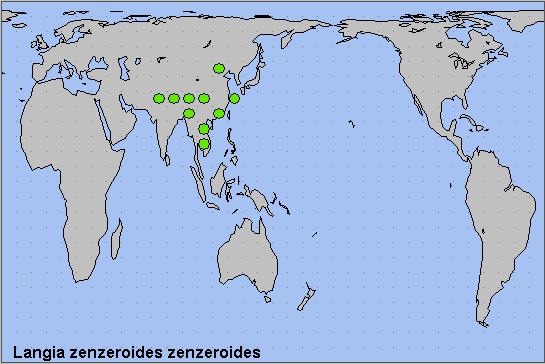
Oriental.
 Return to Sphingidae of the Eastern Palaearctic species list
Return to Sphingidae of the Eastern Palaearctic species list